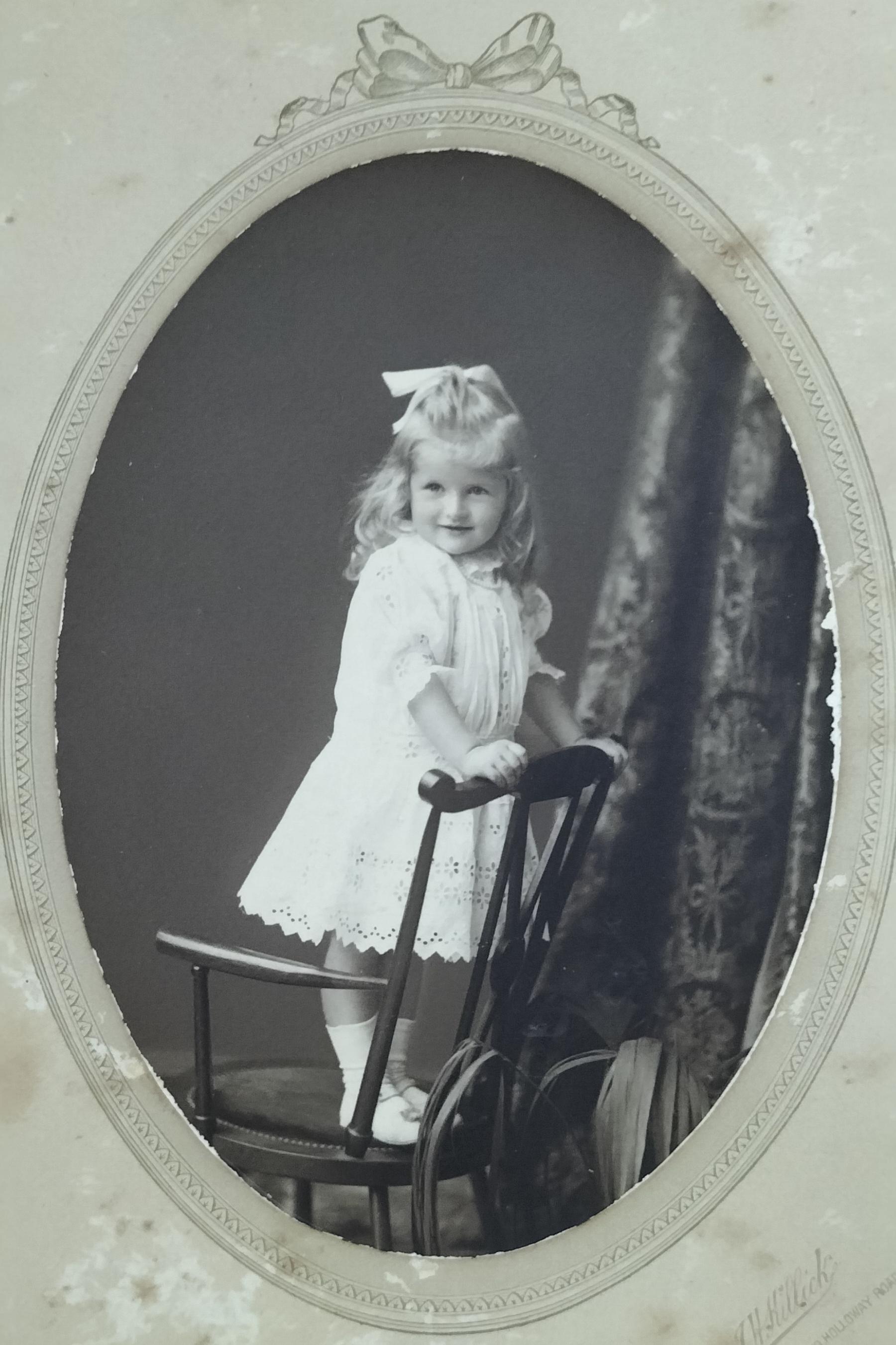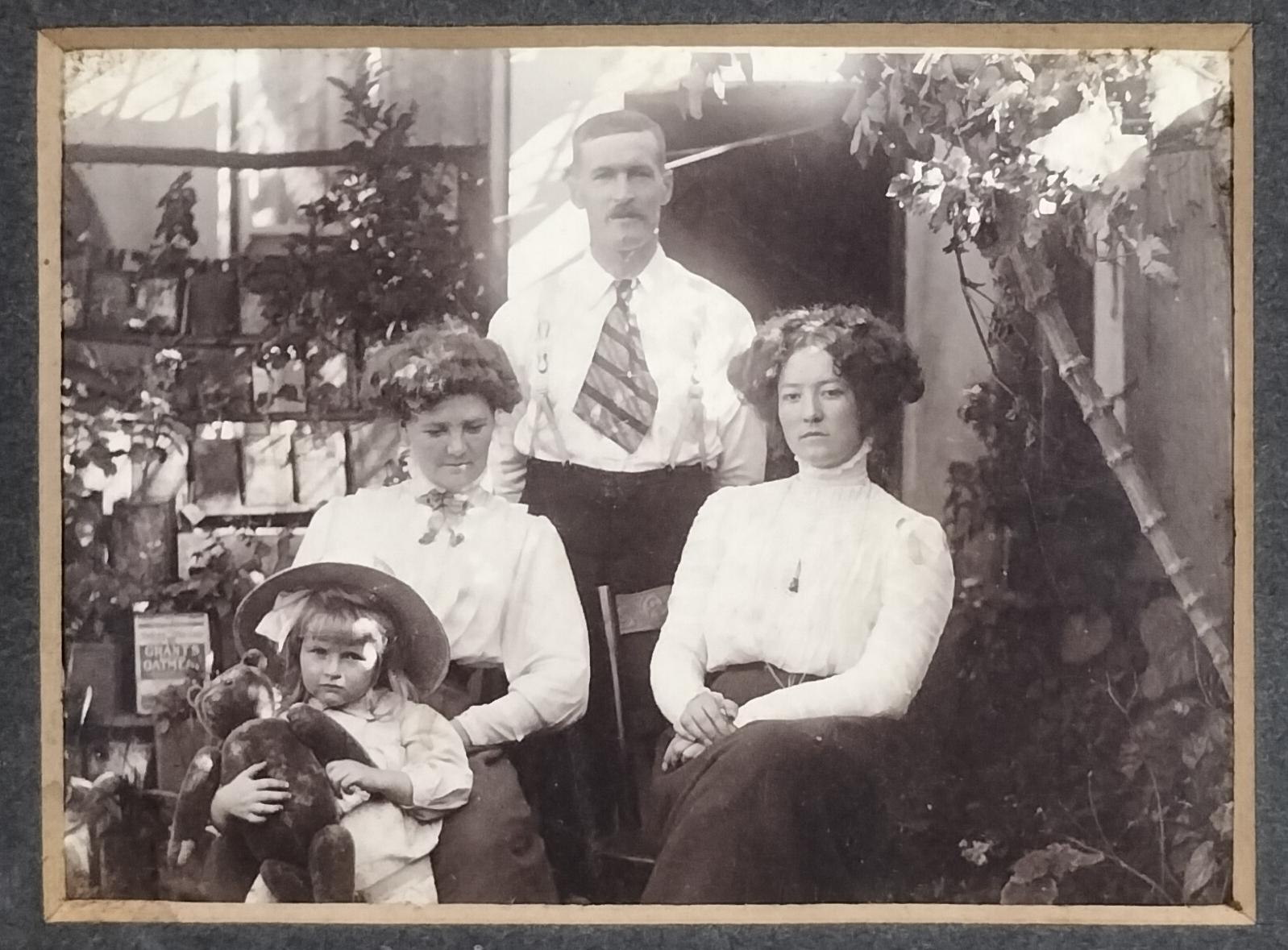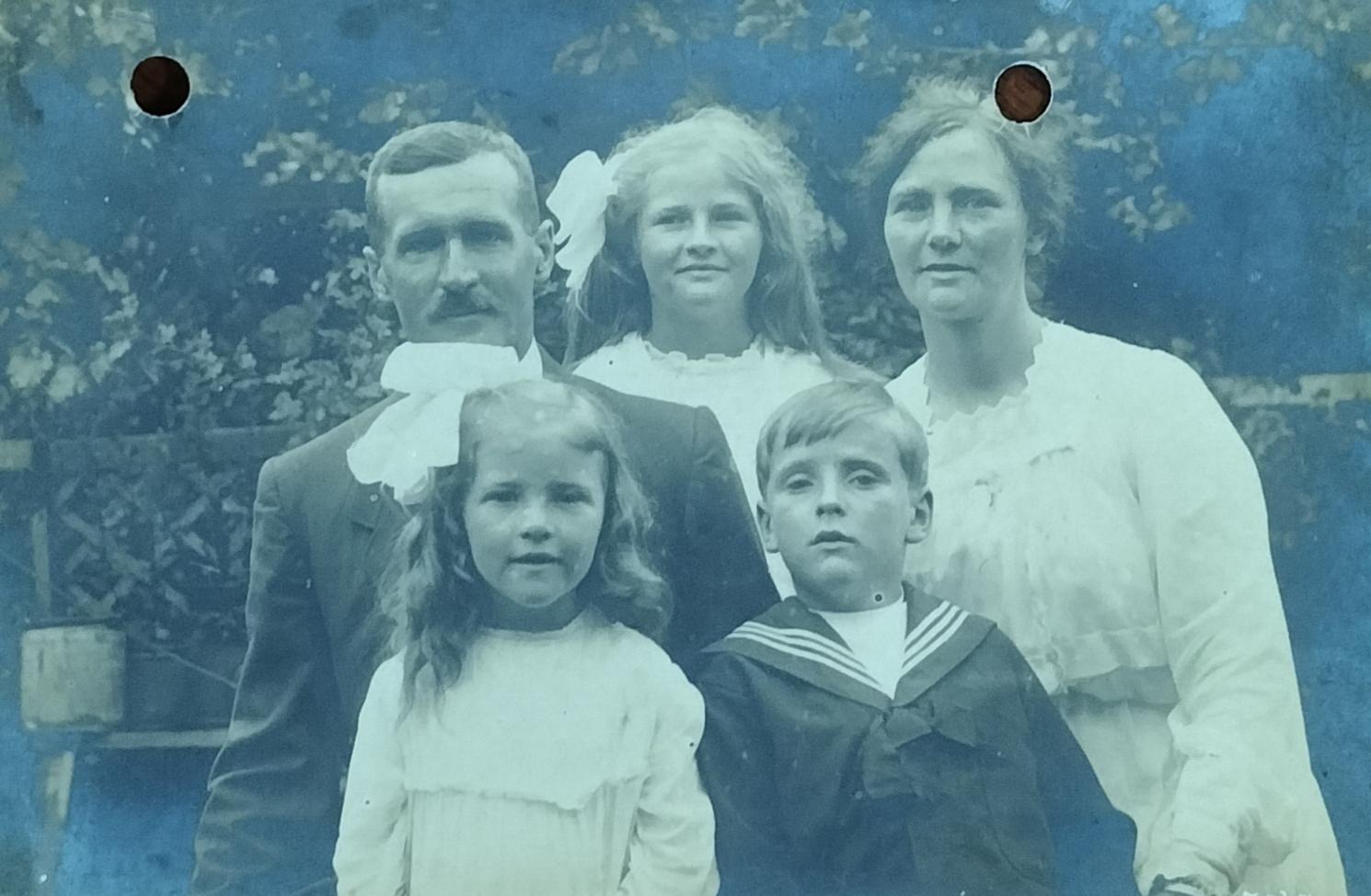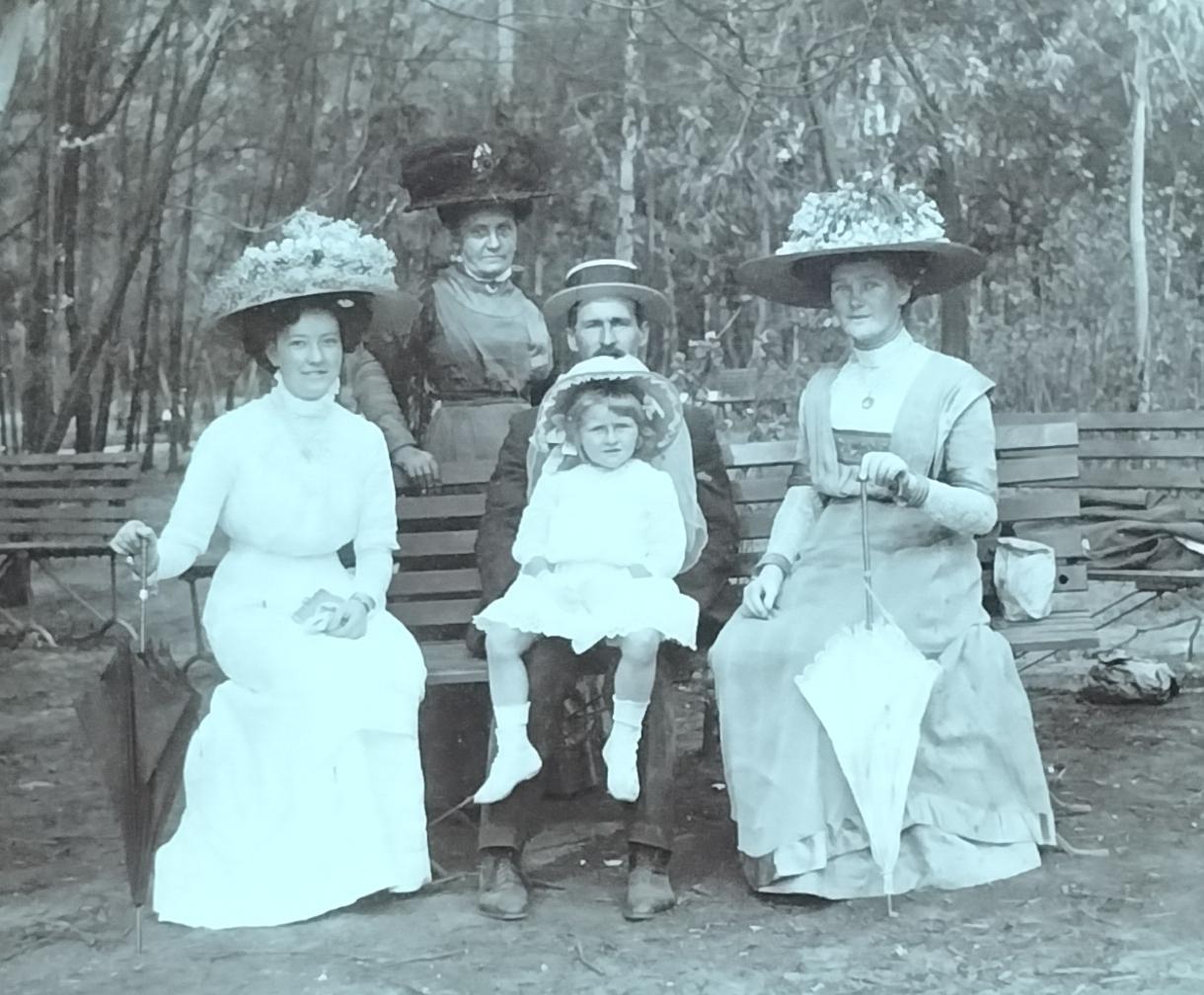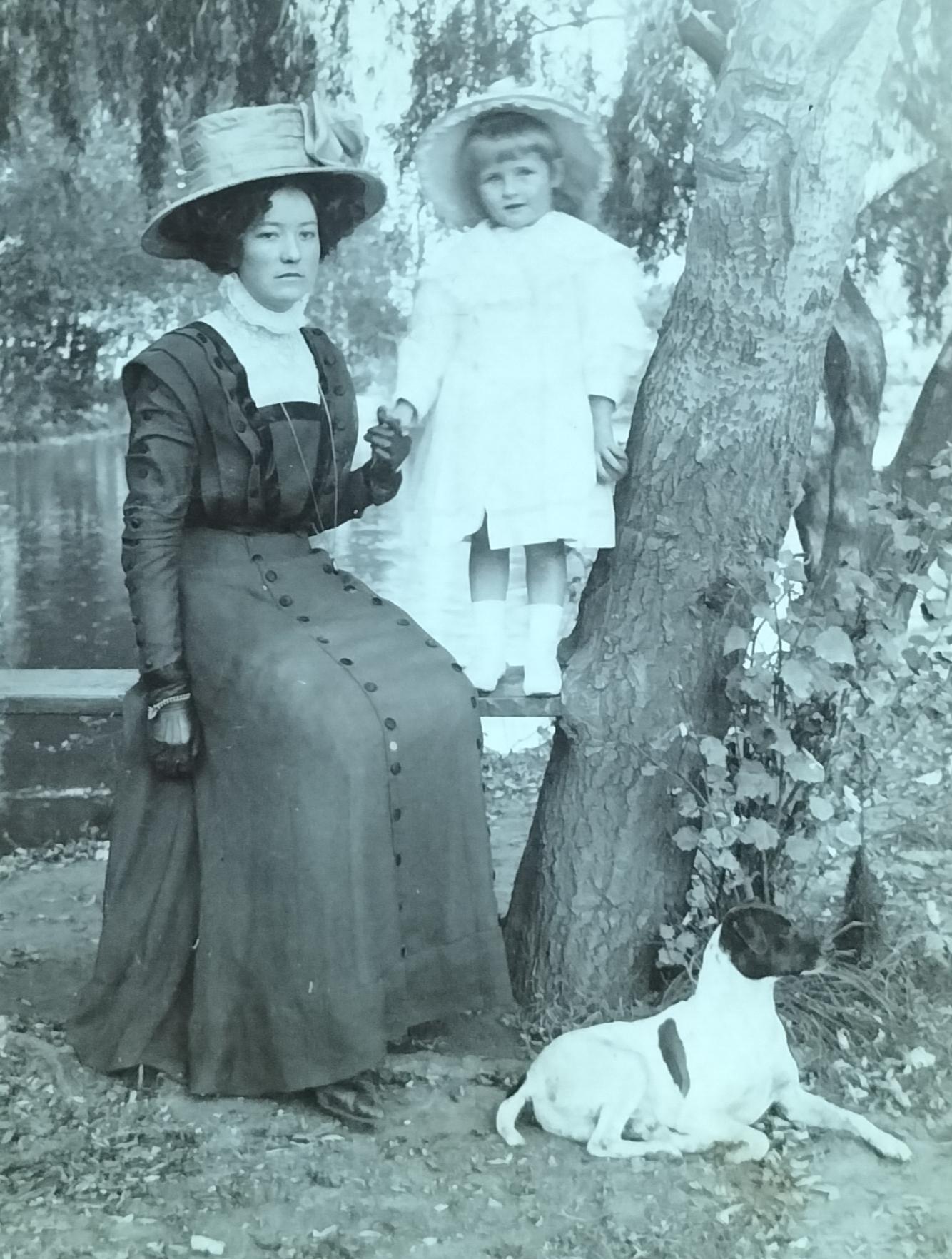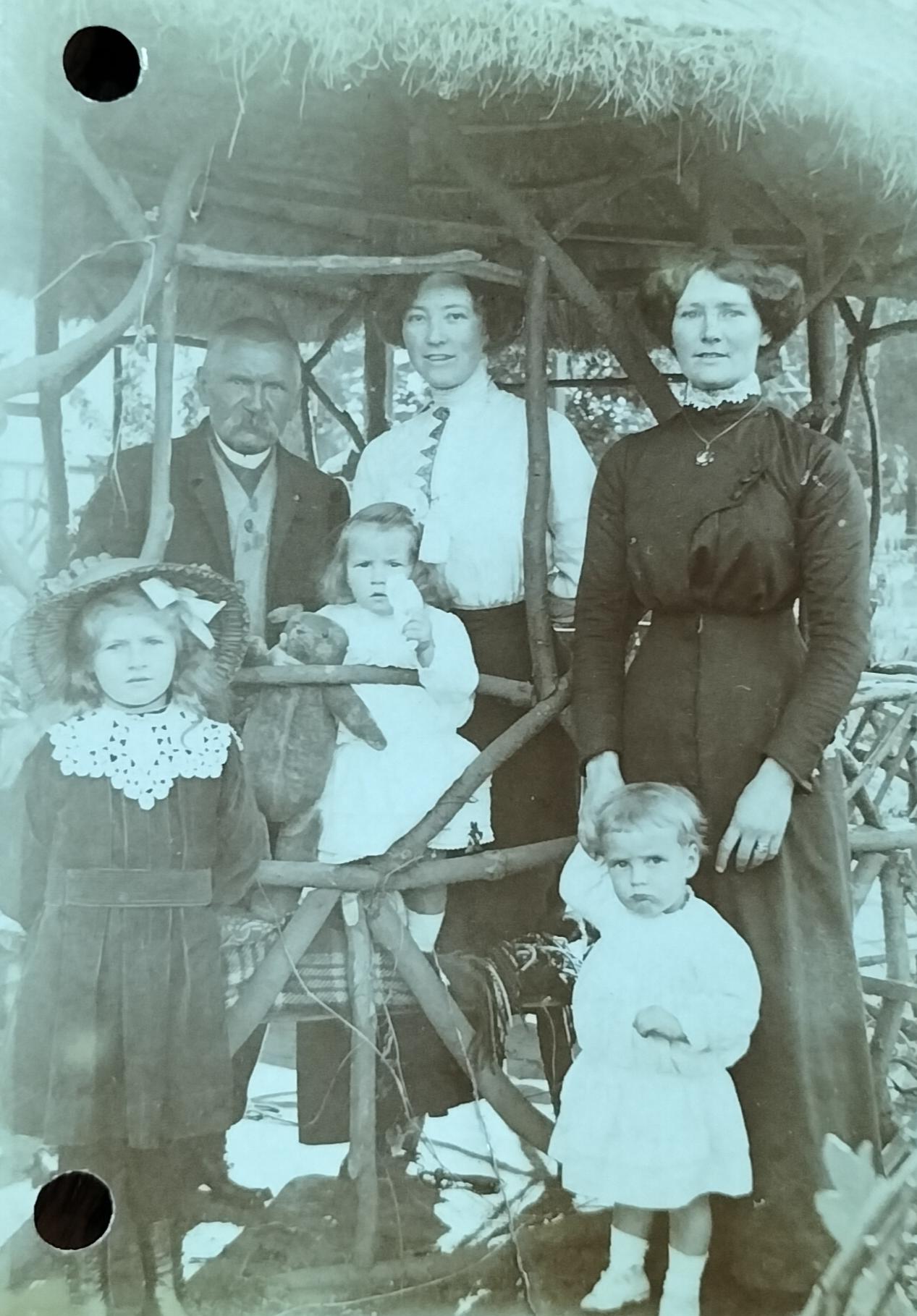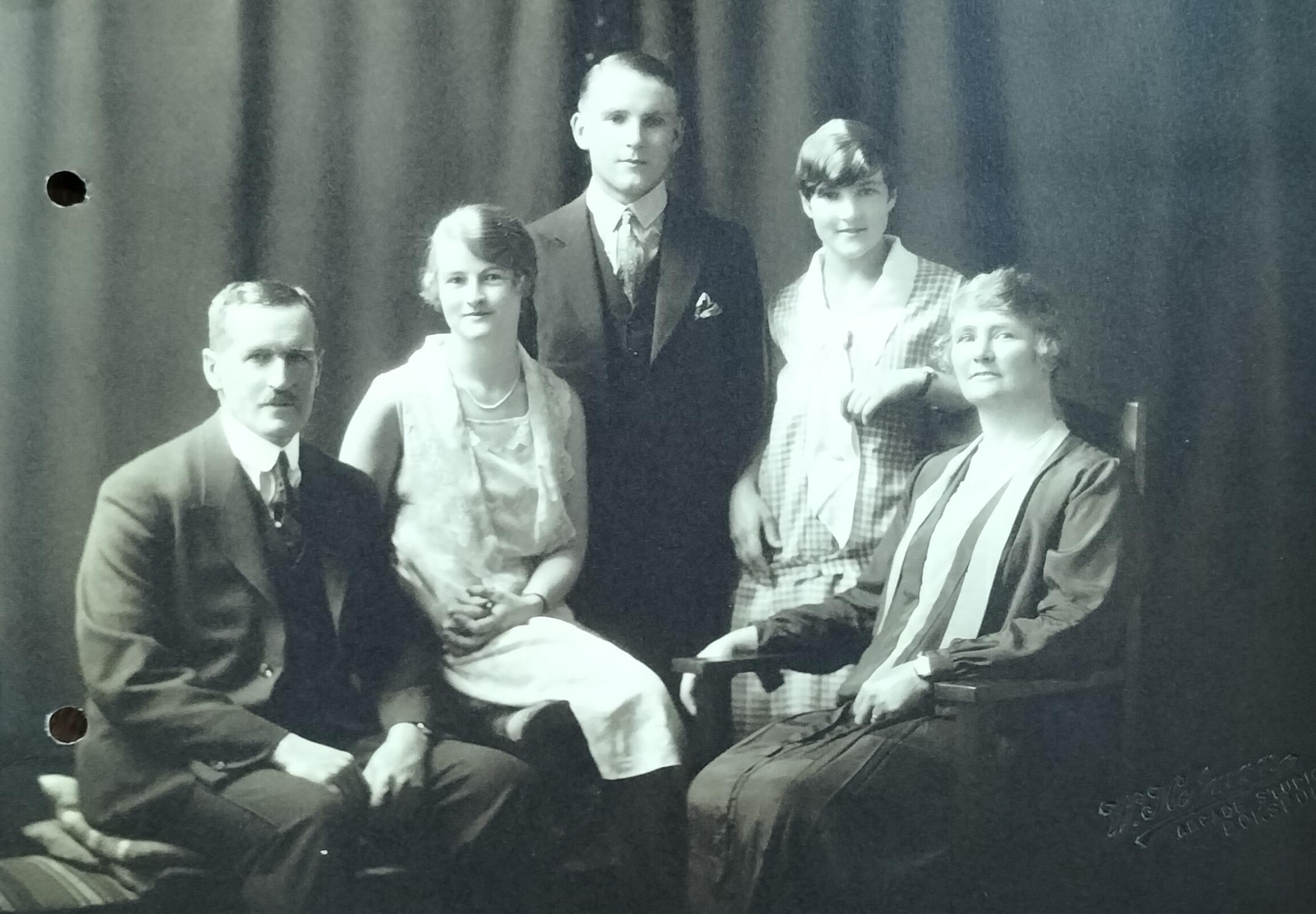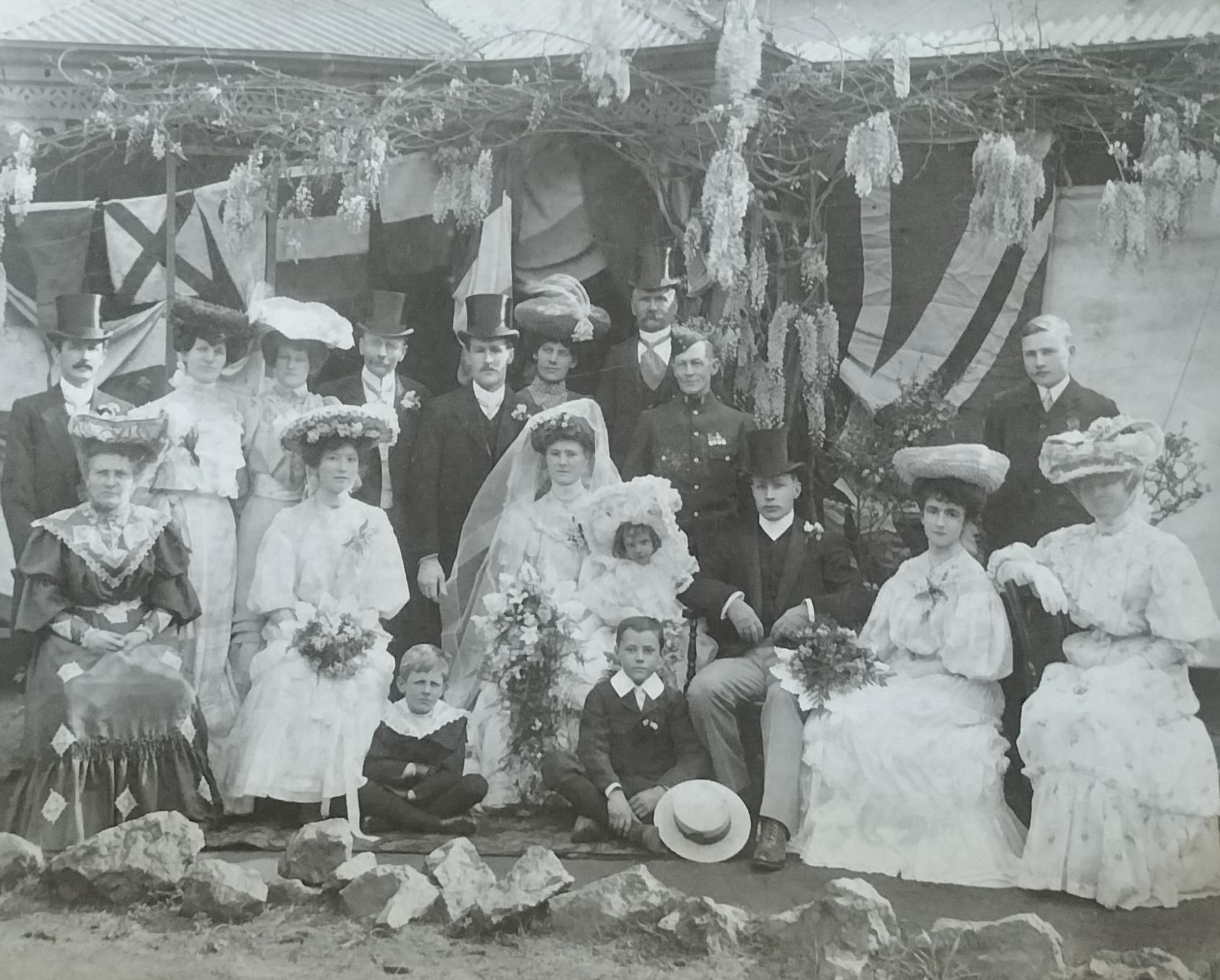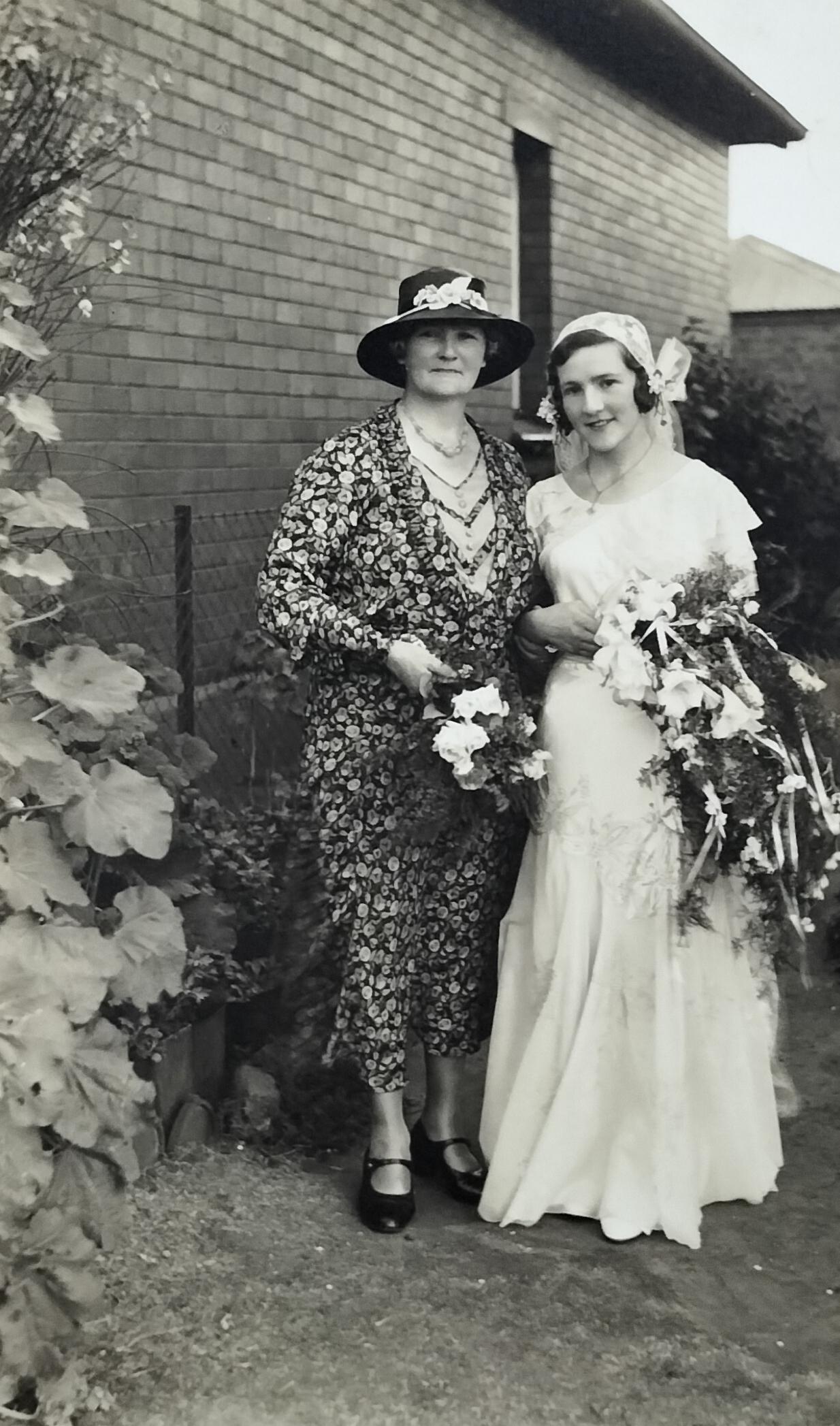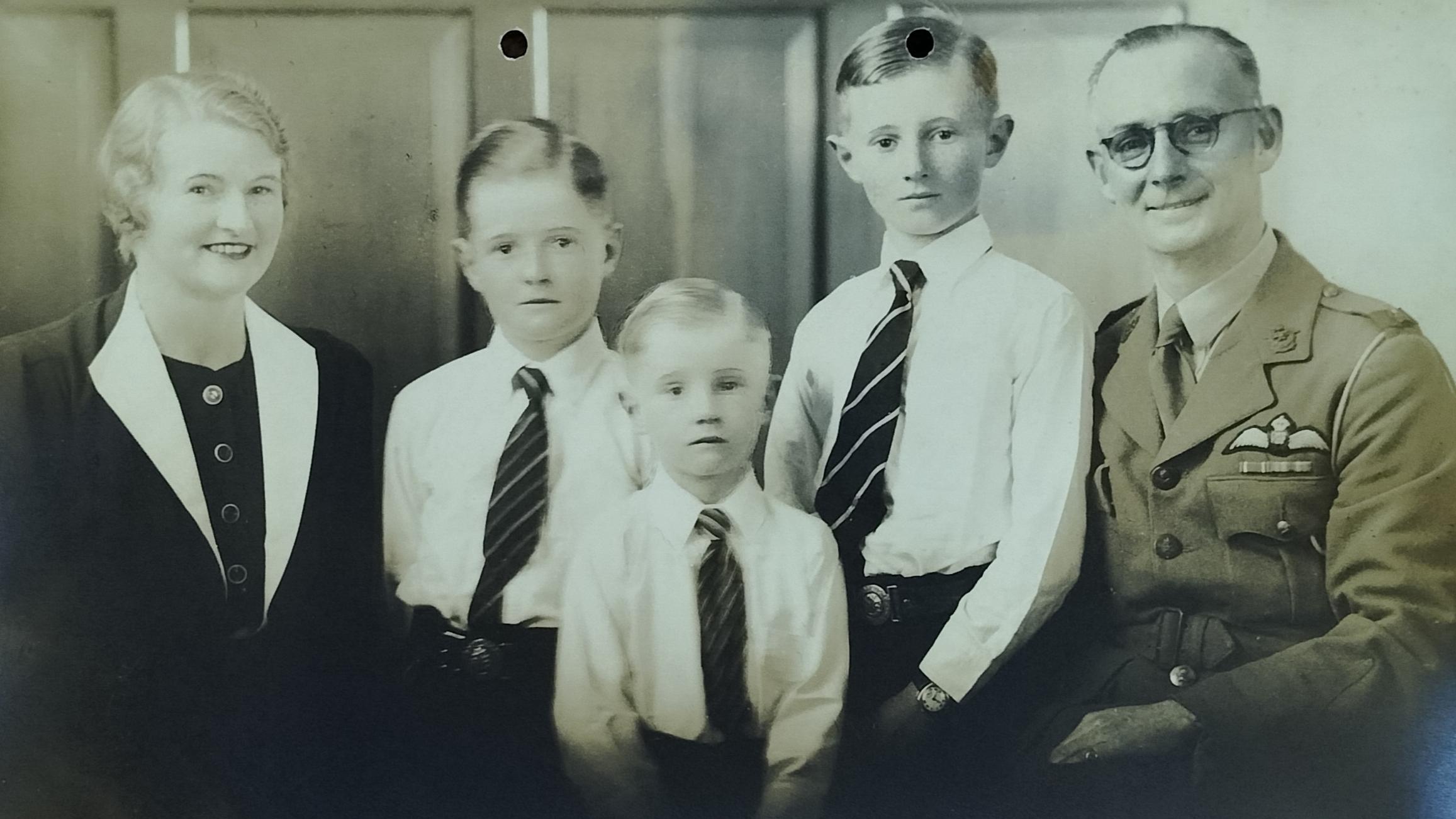
Disclaimer: Any views expressed by individuals and organisations are their own and do not in any way represent the views of The Heritage Portal. If you find any mistakes or historical inaccuracies, please contact the editor.
A family file titled: Beadle Family and Relatives was recently acquired at a car boot sale in Johannesburg. The album, containing the Beadle family tree and many other family documents of significance was solely bought for the photographs contained therein. For some reason the seller was not negotiable on the rather exorbitant selling price. I budged and acquired the album at his selling price. Back home I accepted that the purchase price was fair in that the album contained rich family history – discarded family history.
One of the documents that immediately attracted my attention was the story of Lorna Edna Nattrass (Beadle), neatly typed on two pages. I cannot help but to wonder whether this life story was possibly put together by Lorna Nattrass for publication in a specialist interest group magazine, or whether it was simply meant for the inclusion in the Beadle family tree album. If her discarded story was not previously captured, the electronic capturing thereof becomes significant in that it contains rich family history and also briefly reflects, amongst others, on South Africa during the Second World War.
Lorna was clearly an energetic, positive individual. In her story she touches on the fact that she obtained a pilot’s license and that she was a volunteer during the Second World War. She also achieved as a tennis player, pianist, in needlework, a cookery show judge, and as instructor at ML Sultan Tech where her husband, Henry (Hal), was the first Principal. It is also recorded that she was an untiring contributor to women institute activities in Natal. Lorna also had the honour of becoming a great-great grandmother.
Lorna must have captured her life story, recaptured below, after the death of her husband in the mid-1970s.
The few family photographs included in the Beadle family file as it relates to Lorna directly also enriches Lorna’s story.
Three-year old Lorna Edna Beadle. This photograph was captured in Brittian on a visit to her grandparents - 1909
Three-year old Lorna Edna Beadle holding her teddy bear with her grandparents Arthur and Lorna Beadle. On the right is her great aunt Clare Brooke – 1909
Lorna Edna Beadle between her grandparents Arthur and Lorna Beadle. In front are her twin siblings Elaine and Dudley – Postcard circa 1916
Lorna Beadle seated on the lap of her grandfather Arthur. On the right is Lorna Beadle. Seated on the left is Clare Brooke. Standing behind the bench is Lorna’s great grandmother Brooke.
Lorna Edna Beadle with her great aunt Clare Brooke – Post card circa 1909
Lorna Edna Beadle, left with brother and sister, the twins, Elaine and Dudley. The adult male is described on the back of the photograph as Uncle Billy. The two adult ladies are Clare and Edna.
Here is her story – as typed on two pages. More details about her family she refers to is presented at the end of her story below. The entire document has been retyped – as is - with minimum amendments/corrections:
My Life Story – Lorna Edna Nattrass
I was born in Johannesburg, Transvaal, in 1906. Five years later my twin brother and sister arrived. We all lived in Boksburg, 14 miles east of Johannesburg on the Witwatersrand; here I matriculated, giving, at the same time, music lessons to some of the local children to eke out my pocket money. I would like to have gone to University and majored in Mathematics and History, but family funds were rather low so I took a short course in Bookkeeping, Shorthand and Typing. I obtained a post as Secretary to the Principal of the Rand East Technical and Trades School in Boksburg in 1925 – later the school moved to its permanent buildings in Benoni (six miles further east). The new Science Master, appointed at the same time as I was, and I were the only unmarried members of staff – we married in 1928 and went overseas for our honeymoon when I met his family for the first time in County Durham, England.
On our return from our honeymoon we lived in Benoni in a small rented bungalow, and I resumed my tennis, eventually becoming, for one year, the Singles Champion of the East Rand. We bought a stand and built our home, to my husband’s design in 1931. We lived in it for exactly three months, and then were transferred, at a day’s notice, to Witbank (the centre of the coal-mining district 100 miles from Johannesburg), where my husband was appointed Principal to the newly opened Witbank Technical College. Our first son was born in 1932, the second in 1934, and the third in 1937.
Meanwhile the college expanded, and we obtained our first motorcar, a workshop reconditioned fourth-hand Wolsey. In 1938 my husband was granted unexpected long leave, so we took the three children over to England where we stayed with his parents in Durham. We were there during the Munich Crisis and my husband helped, with the old car we had bought in Newcastle-on-Tyne, to distribute gas masks to the community on the night Chamberlain, Daladier and Hitler met in Munich. We were a month late in returning because of the rush for passages to South Africa.
My husband, an ex-pilot of the First World War, fostered and encouraged the formation of a flying school in Witbank in 1939, and I became one of its first pupils, eventually obtaining my Pilot’s “A” Flying License. I was the only woman in the district to do so. In 1940 the Women’s Voluntary Air Force, S.A. was formed, and I became the first Commandant in Witbank and District, which included the whole of the Eastern Transvaal. Our W.V.A.F. became a strong body, recruiting and training women and girls for active service, addressing recruitment meetings, running courses in First Aid, Home Nursing, Hospital relief, ambulance driving, fire drill, fire fighting, physical training, garage work and the dismantling and reassembling of cars and lorries, knitting and sewing for troops, dispatching of parcels to our men and women serving up North or overseas, and holding functions to raise money for War Funds. At the end of the War I received the South African medal for War Services.
In 1939 my husband applied to rejoin the R.A.F. but was referred to the S.A.A.F. to which body he was attached in 1940 and was at first stationed in Pretoria. He commanded three Air Schools – in Germiston, Port Elizabeth and Pretoria – one of which was for the training of members of the Women’s Auxiliary Air Force as air mechanics and parachute packers. He was awarded the O.B.E. (Military) in 1944; he went Up North on a course and while there he was seconded to the R.A.F. and remained with them until the end of the war. I moved up to Johannesburg with our three sons in 1943, and while they were at school I worked in the mornings as an Audit Clerk, and in the afternoons I did dressmaking to supplement our income which had dropped when my husband joined up.
On my husband’s demobilization we moved to Benoni where he was made Principal of the same Technical College at which he used to teach. In August 1946 our fourth son was born. Just a year later my husband became first Principal to the newly granted Technical College for Indians in Durban, Natal, and we all moved to Durban. The College was not then built, but office work and part-time classes were held in borrowed classrooms, halls, garages, and any building that could be utilised when empty. My husband asked me to run his part-time classes in pattern-cutting, dressmaking and needlework for Indian women – these became very popular and the number attending quadrupled each year.
The College building and very magnificent Hall were built in 1956, and we all moved thankfully into airy, well-appointed classrooms. I continued to run the part-time adult dressmaking classes, and, finding difficulty in obtaining teachers, at my husband’s suggestion I gave intensive training to the brightest of pupils, and they, in turn, conducted the beginners’ classes.
In 1957 I joined the full-time staff of the Homecrafts Section (consisting mainly of ex-standard VI girls), and after six months I was made Head of the Homecrafts Department when the former Head left the district. With my husband’s help and advice I ran this Department for two-and-a-half years, during which time I studied for, and passed with honours, the Dressmaking Instructress’s Diploma. We eventually managed to obtain a degreed Head of Department, and I worked under her as Vice until my husband and I retired in 1962.
In 1958/59 my husband, a very active member of the Durban Rotary Club, was made the President, and I became President of Durban Rotary Anns, which, at that time, had over 100 members. This was a very difficult, but rewarding year as I was teaching full- and part-time, running my Homecrafts Department and attending Rotary Ann meetings, sewing parties, functions and visits.
On our retirement we moved down to Southport on the Lower South Coast, about 70 miles south of Durban, where we bought a lovely old verandah-encircled house, in large wooded grounds, facing the sea and about 100 yards from the beach. We joined the nearby Rotary Club and in time became its Presidents. When we resigned from Rotary I joined the local Women’s Institute “Bendigo” and became interested in Handicrafts and the Drama sections, taking part in several one-act plays in the latter.
I became president of the Institute in 1969/70 and 1970/71, during which time I took the Exhibitors’ and Judges’ Courses in Needlework and Embroidery. I qualified as a Learner Judge, only needing experience at Show work, under the leadership of a fully qualified Judge, to become one myself. I introduced the wearing of our own Institute emblem-painted aprons at local functions where we served tea or other refreshments. I started Mutual Aid classes in which individual members, proficient in one line or other, gave demonstrations in their own homes to those interested in that particular subject; and I worked for the providing of suitable stage curtains and the enlargement of the stage in the local hall we used for our meetings. I took on the duties of local Librarian and served, in turn with two others, in issuing and selecting books for the public.
In 1970 I started the Bendigo Seniors’ Club for elderly citizens, and arranged monthly social evenings with entertainment. This Club became very popular and the numbers increased each year. Having had to give up tennis some years previously owing to a knee injury, I took up bowls, and became a member of the Southport Bowling Club.
In April 1973 I lost my beloved husband after 44 years of sheer happiness and fulfilment in our married life. I decided to sell my home in Southport and move back to Durban. I was fortunate in finding a charming flat which is part of an old house divided into two, and set in a lovely garden with rolling lawns, colourful flower beds and shady old trees, and I am able to keep with me my faithful and loved Corgi bitch. Here in Durban I joined the Rose Glen Women’s Institute – an Institute of young, keen and enthusiastic members. They asked me to become Music Convener and I am now trying to form a vocal group and later a Choir. At Group level I have become National Goodwill Convener, which mainly entails work, help and encouragement given to Bantu, Coloured and Indian women in all spheres of home management, with an ultimate view to their forming their own Institutes. I have been appointed Liaison Officer to the Federation of Women’s Institutes for Indian Clubs, and I am at present trying to arrange the formation of such Homemakers’ Clubs in the Indian areas.
Our four sons are all very happily married and have presented me with nine grandchildren. The oldest son is a Professor of Light Current Electrical Engineering in the Natal University; the second son is Chairman of the S.A. Personnel Management Association and he conducts his own Managerial Courses; the third is a Technical and Education Officer for Goldfields and he is responsible for training courses on the various gold mines in the Transvaal. The youngest son is with I.B.M. and has attended and conducted courses in South Africa and overseas – he is now transferred at his request, to the Sales Department of the same firm in Durban.
I have indeed been blessed throughout my life – I had excellent and loving parents, a happy childhood, a wonderfully happy marriage, and four splendid sons who have been a constant pleasure to us and filled our hearts with pride and joy. My only real sorrow was the loss of my very dear beloved husband.
The Beadle Family
Both born in Grahamstown, Lorna’s parents, Arthur Edwin Beadle (1881 – 1934) and Lorna Amelia Dunn (1883 - 1976) got married in Johannesburg on 12 September 1905.
The couple had three children. The first-born Lorna Edna was born on 7 July 1906. Her brother and sister (twins) Arthur Dudley and Elaine Mary (married Hall) were born 5 years later in July 1911.
Lorna, second from left with her parents Arthur and Lorna and twin siblings Elaine and Dudley – Photograph captured by W Hoffman of Arcade Studio in Boksburg – circa 1925
Wedding day of Lorna Nattrass’s parents, Arthur Beadle and Lorna Dunn on 21 September 1905 in Johannesburg. The bride, Lorna, is seated in the middle with Arthur standing on the left behind her. The remainder of the sitters are standing from left to right: Henderson, Fanny Sherry, Unknown, Ernest Sherry, Mrs. le Clue (right of Arthur), Will Praed, Archibald Beadle (in uniform) and Alfie Dunn. Seated from left to right are: Mrs. Brooke, Clare Brooke, Harry Sherry, Percy Brooke, Amy Sherry (on lap of bride), Willie Sheffield, Ethel Beadle & Mrs. Sherry.
The Nattrass Family
British-born Henry (Hal) Nattrass (1898 – 1973) was a teacher at the time of their marriage in Boksburg in November 1928. He must have arrived from in South Africa shortly after the First World War.
Sons Henry Lee, born in Witbank in 1932, had 4 children. George Arthur Neil, born in Witbank in 1934, had 4 children. Brian Keith, born in 1937 had 3 children and Stanhope Roy, born in 1946, had 3 children.
Photograph by unknown photographer of the Nattrass family (circa 1942). Lorna Edna Nattrass (left) and Henry (Hal) Nattrass in uniform with their three sons Henry Lee, George Arthur Neil Roy & Brian Keith. The youngest of the four boys, Stanhope Roy, was only born some four years after this photograph was taken.
Closing
The question may arise: Why share her story? It is simple – It would be sad, very sad, if this snippet of our country’s history is lost. I accept that we would have been none the wiser if her story had never been shared.
Lorna Beadle (senior) and her daughter Elaine (twin sister to Dudley) on her wedding day – Photograph by Johannesburg-based photographer Leo Dorner.
Main image: Photograph by unknown photographer of the Nattrass family (circa 1942). Lorna Edna Nattrass (left) and Henry (Hal) Nattrass in uniform with their three sons Henry Lee, George Arthur Neil Roy & Brian Keith. The youngest of the four boys, Stanhope Roy, was only born some four years after this photograph was taken.
About the author: Carol is passionate about South African Photographica – anything and everything to do with the history of photography. He not only collects anything relating to photography, but also extensively conducts research in this field. He has published a variety of articles on this topic and assisted a publisher and fellow researchers in the field. Of particular interest to Carol are historical South African photographs. He is conducting research on South African based photographers from before 1910. Carol has one of the largest private photographic collections in South Africa.
Sources
- Familysearch.org (Beadle and Nattrass family)
- Hardijzer Photographic Research Collection (Beadle family file)
Comments will load below. If for any reason none appear click here for some troubleshooting tips. If you would like to post a comment and need instructions click here.

